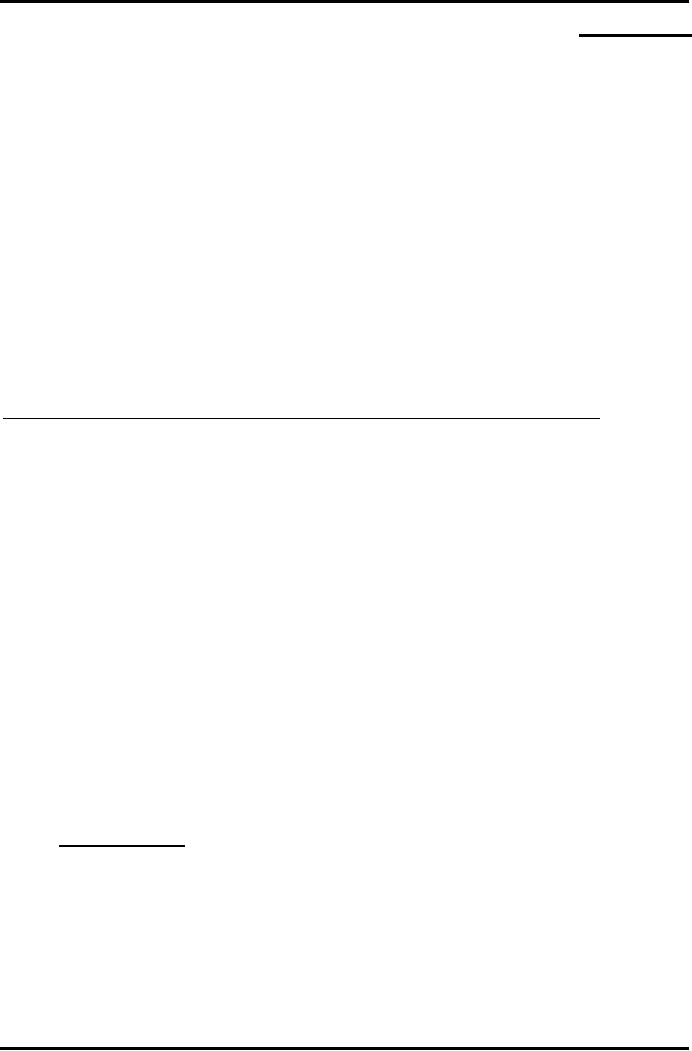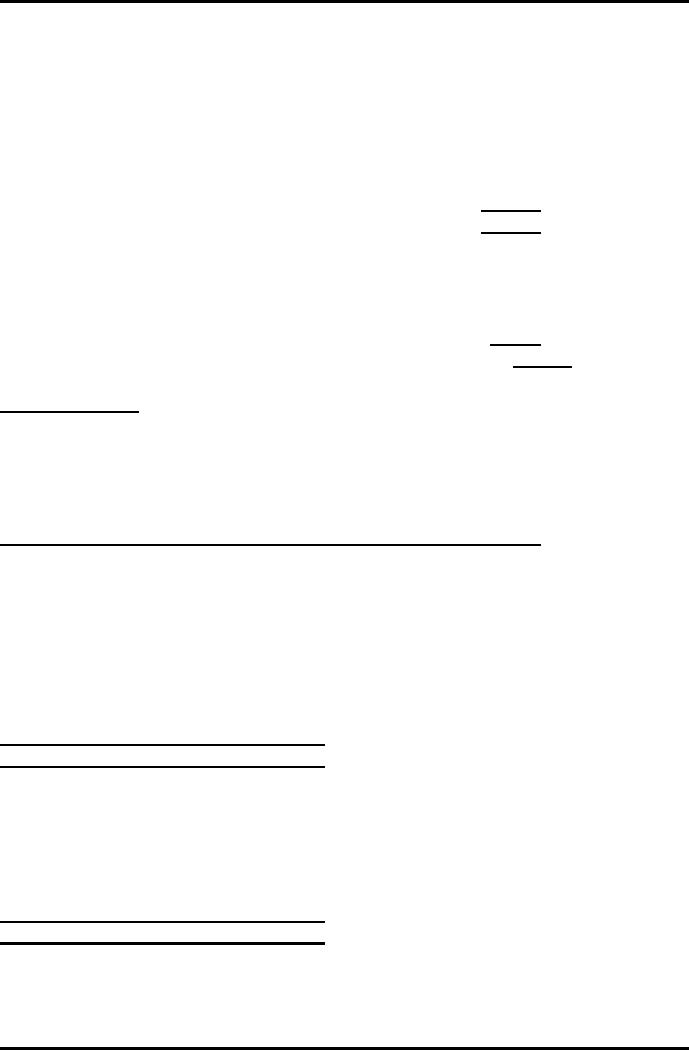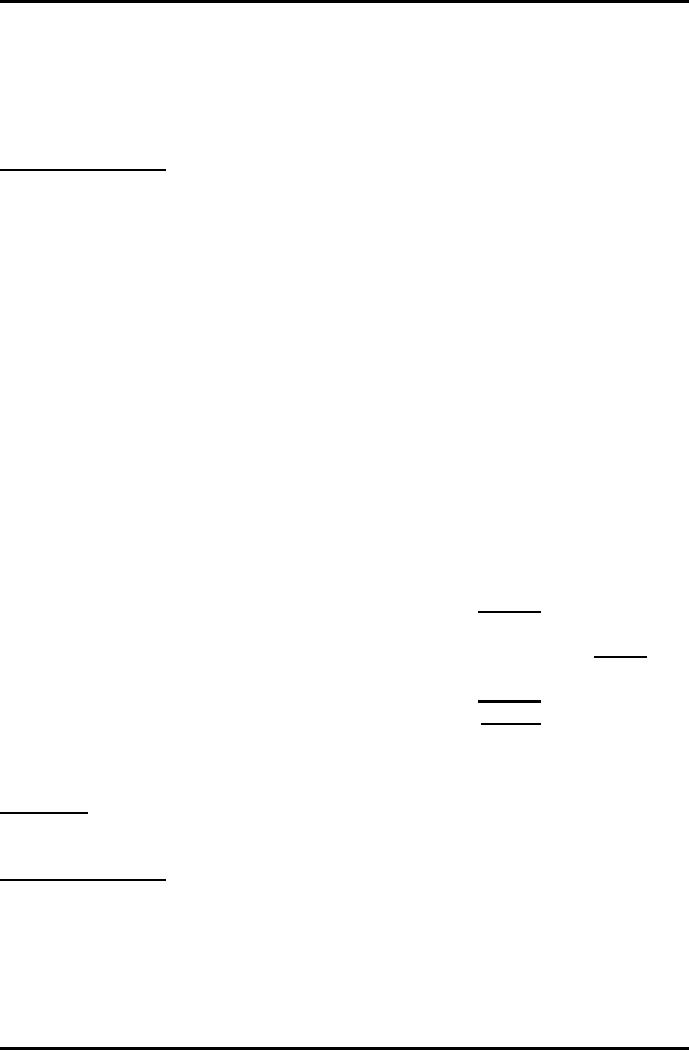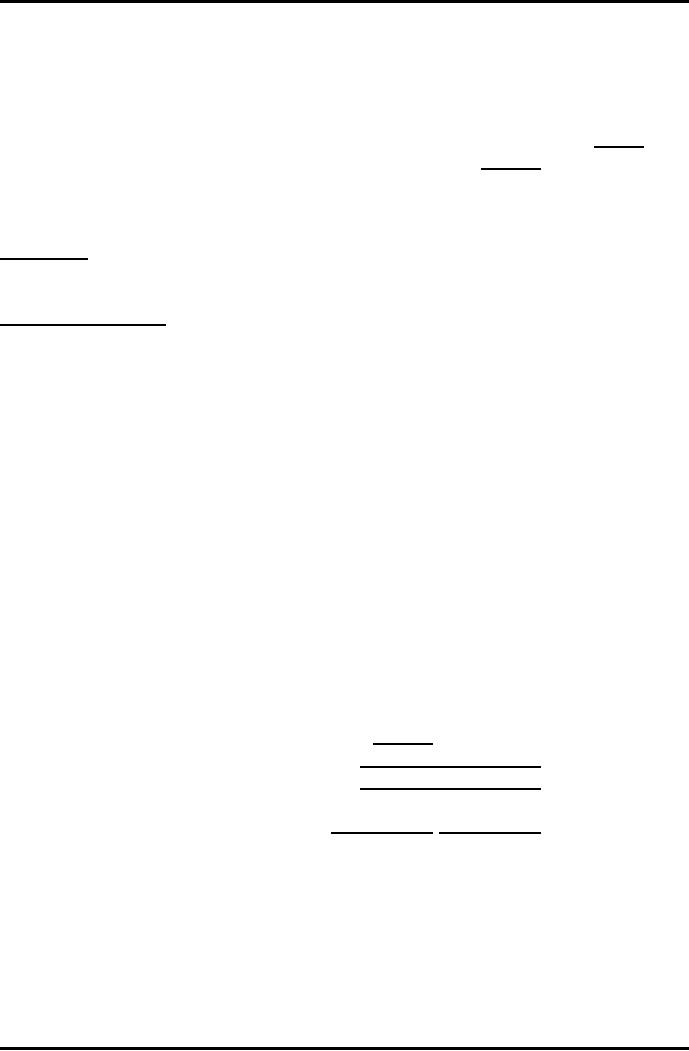 |
EARNINGS PER SHARE |
| << EXCESS OF THE CARRYING AMOUNT OF THE QUALIFYING ASSET OVER RECOVERABLE AMOUNT |
| Earnings per Share >> |

Advance
Financial Accounting
(FIN-611)
VU
LESSON
# 33
EARNINGS
PER SHARE (IAS
33)
Earning
per share is an accounting
ratio that improves
comparison of the
performance
of
different entities in the
same period and of the same
entity in different
accounting
periods.
International
Accounting Standard (IAS) 33
provides complete guidelines
regarding
calculation
and presentation of EPS. Only listed
companies need to present
EPS.
Where
a non listed company chooses to
present EPS in its financial
statements, it must
do so in
accordance with IAS 33.
Basic
Earnings per Share
(EPS)
Apparently
EPS is the outcome of
current year's earnings
divided by the number of
ordinary
shares. IAS 33 guides to use following
formula for calculation of basic
EPS:
Profitsavailablefor
distributi ns to ordinaryshareholde
s
o
r
= EPS
Weighted
averagenumber of
ordinarysharesoutstandin
duringthe year
g
Profits
available for distribution to
ordinary shareholders:
This
is the current year's profit
figure which is obtained after
subtracting all types of
expenses
(cost of goods sold,
administrative, selling, financial and
income tax
expenses)
out of all the incomes (revenues and
gains) recognized during the
year. This
is
also known as the profit
after tax.
Weighted
average number of ordinary
shares outstanding during
the year:
This
is the figure that needs
calculation; these are the
weighted average of
ordinary
shares
that remained outstanding during
the year. This figure is
obtained after making
certain
adjustments concerning increase or
decrease in the number of ordinary
shares
in
accordance with the time
period due.
The
time-weighting factor is the number of
days the shares were
outstanding
compared
with the total number of days in
the period.
A very
simple example to understand
the concept of weighted
average is as under:
179

Advance
Financial Accounting
(FIN-611)
VU
FS
Company Limited
Number
of
Ordinary
Shares
January
1, 2007
Opening
Balance b/f
200,000
September
30, 2007 Issue of ordinary
share capital
200,000
December
31, 2007 Closing Balance
c/f
400,000
Weighted
Average number of ordinary share
capital outstanding during the
year:
200,000
(outstanding
for full year)
200,000
200,000 x
3/12
(outstanding
for Oct. Nov. & Dec.)
50,000
Weighted
average number of ordinary share
capital outstanding250,000
Another
example to understand weighted
average calculations:
Jubilation
Co., a listed company, has
the following share transactions during
the year
ending
on December 31, 2007.
Date
Details
Shares
Treasury
Shares
Issued
shares*
Outstanding
Jan
1, 2007
Balance
b/f 200,000
30,000
170,000
May
31, 2007
Fresh
Issue 80,000
-
250,000
Dec
1, 2007
Treasury
shares
25,000
225,000
Dec
31, 2007
Balance
c/f 280,000
55,000
225,000
*Treasury
shares are the company's own
shares held by the company
itself
Weighted
average number of shares
Shares
weight
weighted
Outstanding
in
months
average
170,000
5/12
70,833
250,000
6/12
125,000
225,000
1/12
18,750
214,583
Alternative
calculation:
Number
of
weight
weighted
shares
in
months
average
170,000
12/12
170,000
80,000
7/12
46,666
(25,000)
1/12
(2,083)
214,583
180

Advance
Financial Accounting
(FIN-611)
VU
Shares
are usually included in the
weighted average number of shares from
the date
on which
the consideration is receivable which is
usually the date of
issue.
Ordinary
shares issued as purchase
consideration in an acquisition should be
included
as of
the date of acquisition
because the acquired
entity's results will also be
included
from
that date.
Solved
problem # 1:
Famous
Co. is a company with an issued and
paid up capital of 100,000
ordinary
shares
of Re. 1 each and 20,000 10%
debentures of Re. 1 each.
The company
manufactures
electrical appliances.
During
its accounting year ending
on December 31, 2007 the
company had operating
expenses
of Rs. 50,000 the gross
profit was Rs. 200,000.
The company paid the
10%
interest
on debentures and declared an ordinary
dividend of 40 paisa per
share.
Assuming
an income tax rate of 30% on
the given figures show the
trading results and
EPS
of the company.
Solution:
Famous
Co
Income
Statement
For
the year ended December
31, 2007
Rupees
Gross
profit
200,000
Operating
expenses
(50,000)
Profit
from operations
150,000
Interest
on debentures
(2,000)
Profit
before tax
148,000
Income
tax
(44,400)
Profit
after tax
103,600
Earnings
per share
Rs.
103,600 = Rs. 1.036 per
share
100,000
Solved
problem # 2:
In
addition to the information
given in the above problem
assume the Famous Co
also
issued
further 40,000 ordinary shares on July 1,
2007.
181

Advance
Financial Accounting
(FIN-611)
VU
Solution:
Weighted
average number of ordinary
shares
Balance
on Jan 1, 2007
100,000
Issued
on July 1, 2007
40,000 x
6/12
20,000
Weighted
average
120,000
Earnings
per share
Rs.
103,600 = Rs. 0.863 per
share
120,000
Solved
problem # 3:
On
September 30, 2008,
Blue-moon Co made an issue at full
market price of
1,000,000
ordinary
shares. The company's
accounting year runs from January 1 to
December 31.
Relevant
information for the year 2007 and 2008 is
as follows:
2008
2007
Shares
in issue as on December 31
9,000,000
8,000,000
Profits
after tax (in Rupees)
3,300,000
3,280,000
Required:
Calculate
EPS for the year 2008 and
corresponding figure for 2007
Solution:
Weighted
average number of shares
2008
2007
Shares
in issue on opening
date
8,000,000
8,000,000
Fresh
issue
1,000,000
x 3/12
250,000
Weighted
average
8,250,000
8,000,000
Earnings
3,300,000
3,280,000
Rs.
3,300,000 Rs.
3,280,000
Earnings
per share
8,250,000
8,000,000
40
paisa
41
paisa
Despite
an increase in total earnings by
Rs. 20,000 in the year
2008, the EPS is not
as
good
as in the year 2007, because
there was extra capital
employed for the last
3
months
of the year 2008.
182
Table of Contents:
- ACCOUNTING FOR INCOMPLETE RECORDS
- PRACTICING ACCOUNTING FOR INCOMPLETE RECORDS
- CONVERSION OF SINGLE ENTRY IN DOUBLE ENTRY ACCOUNTING SYSTEM
- SINGLE ENTRY CALCULATION OF MISSING INFORMATION
- SINGLE ENTRY CALCULATION OF MARKUP AND MARGIN
- ACCOUNTING SYSTEM IN NON-PROFIT ORGANIZATIONS
- NON-PROFIT ORGANIZATIONS
- PREPARATION OF FINANCIAL STATEMENTS OF NON-PROFIT ORGANIZATIONS FROM INCOMPLETE RECORDS
- DEPARTMENTAL ACCOUNTS 1
- DEPARTMENTAL ACCOUNTS 2
- BRANCH ACCOUNTING SYSTEMS
- BRANCH ACCOUNTING
- BRANCH ACCOUNTING - STOCK AND DEBTOR SYSTEM
- STOCK AND DEBTORS SYSTEM
- INDEPENDENT BRANCH
- BRANCH ACCOUNTING 1
- BRANCH ACCOUNTING 2
- ESSENTIALS OF PARTNERSHIP
- Partnership Accounts Changes in partnership firm
- COMPANY ACCOUNTS 1
- COMPANY ACCOUNTS 2
- Problems Solving
- COMPANY ACCOUNTS
- RETURNS ON FINANCIAL SOURCES
- IASB’S FRAMEWORK
- ELEMENTS OF FINANCIAL STATEMENTS
- EVENTS AFTER THE BALANCE SHEET DATE
- PROVISIONS, CONTINGENT LIABILITIES AND CONTINGENT ASSETS
- ACCOUNTING POLICIES, CHANGES IN ACCOUNTING ESTIMATES AND ERRORS 1
- ACCOUNTING POLICIES, CHANGES IN ACCOUNTING ESTIMATES AND ERRORS 2
- BORROWING COST
- EXCESS OF THE CARRYING AMOUNT OF THE QUALIFYING ASSET OVER RECOVERABLE AMOUNT
- EARNINGS PER SHARE
- Earnings per Share
- DILUTED EARNINGS PER SHARE
- GROUP ACCOUNTS
- Pre-acquisition Reserves
- GROUP ACCOUNTS: Minority Interest
- GROUP ACCOUNTS: Inter Company Trading (P to S)
- GROUP ACCOUNTS: Fair Value Adjustments
- GROUP ACCOUNTS: Pre-acquistion Profits, Dividends
- GROUP ACCOUNTS: Profit & Loss
- GROUP ACCOUNTS: Minority Interest, Inter Co.
- GROUP ACCOUNTS: Inter Co. Trading (when there is unrealized profit)
- Comprehensive Workings in Group Accounts Consolidated Balance Sheet